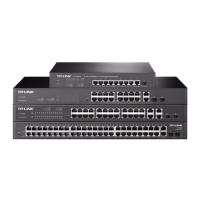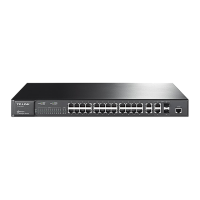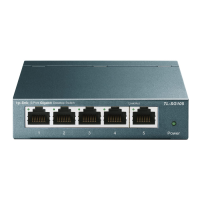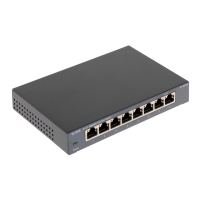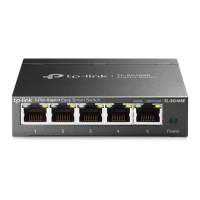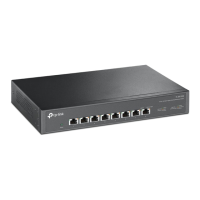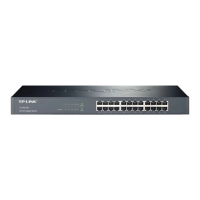TL-SL5428E
24-port 10/100Mbps + 4-port Gigabit L2 Managed Switch CLI Guide
182
snmp-rmon event enable {index}
no snmp-rmon event enable {index}
Parameter
index —— The index number of the entry desired to enable, ranging from 1 to
12, in the format of 1-3,5.
Command Mode
Global Configuration Mode
Example
Enable the SNMP-RMON Event entries 1,2,3,4 and 8:
TP-LINK(config)# snmp-rmon event enable 1-4,8
snmp-rmon alarm config
Description
The snmp-rmon alarm config command is used to configure SNMP-RMON
Alarm Management. To return to the default configuration, please use no
snmp-rmon alarm config command. Alarm Group is one of the commonly
used RMON Groups. RMON alarm management allows monitoring the specific
alarm variables. When the value of a monitored variable exceeds the threshold,
an alarm event is generated, which triggers the switch to act in the set way.
Syntax
snmp-rmon alarm config {index} [var { drop | revbyte | revpkt | bpkt | mpkt |
crc-align | undersize | oversize | fragment | jabber | collision | 64 | 65-127 |
128-511 | 512-1023 | 1024-10240 }] [port port] [s-type { absolute | increment }]
[r-hold r-hold] [r-event r-event] [f-hold f-hold] [f-event f-event] [a-type { rise |
fall | all }] [interval interval]
no snmp-rmon alarm config {index}
Parameter
index —— The index number of the Alarm Management entry, ranging from 1
to 12, in the format of 1-3,5.
var —— The alarm variable. By default, the option is drop.
port —— The port on which the Alarm entry acts, ranging from 1 to 28.
s-type —— Sample Type, which is the sampling method for the selected
variable and comparing the value against the thresholds. There are two options,
absolute and increment. Absolute indicates comparing the values directly with
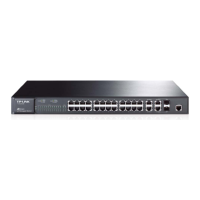
